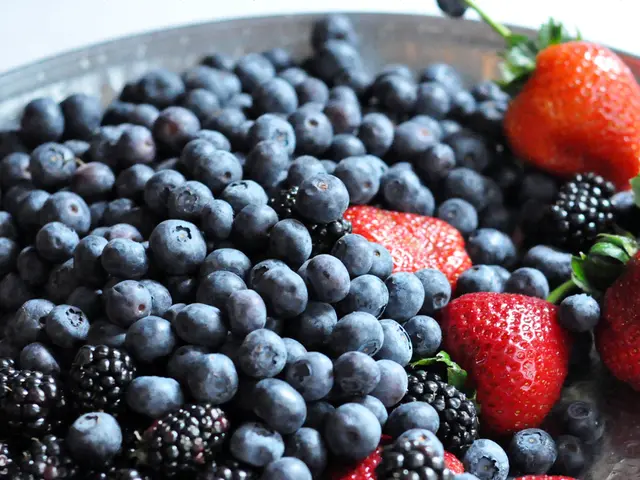Consuming Sugar in Liquid Form Poses Greater Threat Than Solid For Individuals Suffering from Diabetes - Explaining the Reasons Behind It
In a groundbreaking study, researchers from Brigham Young University and several German institutions challenge the long-held assumption that all sugars are created equal when it comes to type 2 diabetes risk. The study, published in Advances in Nutrition, suggests that the source and form of the sugar—particularly whether it's consumed as a liquid or solid— plays a crucial role in health outcomes.
For decades, dietary guidelines have painted sugar with a broad brush, often warning against all added sugars. However, this sweeping new study finds a more nuanced picture: sugars consumed as liquids, such as in soda and even fruit juice, are consistent predictors of a higher risk of type 2 diabetes, while sugars eaten in solid foods may pose no such danger. In fact, they might even offer modest protection.
"Our findings do not support the common assumption that dietary sugar intake, irrespective of type and amount, is consistently associated with an increased risk of type 2 diabetes," said lead author Karen Della Corte, a nutritional science professor at BYU. Instead, context appears to matter.
To arrive at this conclusion, the researchers pooled data from 29 large cohort studies across the globe, examining the dietary habits of more than 800,000 people and tracking who went on to develop type 2 diabetes. By applying dose-response meta-analysis, they found that each additional 12-ounce serving of sugary beverages per day increased the relative risk of type 2 diabetes by 25%. Even one daily soda raised the odds. Fruit juice wasn't much better: each 8-ounce serving bumped risk up by 5%.
The risks were "moderate certainty," according to the study's rigorous grading system. Critically, the analysis adjusted for body weight, calorie intake, physical activity, smoking, and other key lifestyle factors, suggesting the effects were not just a reflection of an overall unhealthy diet.
If sugary drinks are a danger, what about sugars in other forms? Here's where things get interesting. Participants who consumed 20 grams of total sugar a day—roughly five teaspoons—as part of solid foods actually showed a slight decline in diabetes risk (by about 4%). The same was true for sucrose, the kind of sugar found in many baked goods and added to cereal.
However, it's important to note that this study doesn't suggest added sugars in food are good for you. Rather, the findings highlight the need for a more granular view, distinguishing between a soda and a bowl of oatmeal with a spoonful of brown sugar.
The difference likely lies in how the body metabolizes liquid sugars. Beverages like soda and juice are rapidly absorbed and deliver a concentrated blast of glucose and fructose to the liver. This can overload metabolic pathways, drive fat accumulation in the liver, and promote insulin resistance—all precursors to diabetes.
Even fruit juice, often marketed as a healthy choice, fails to deliver on its promise. While it contains vitamins, its high sugar concentration and lack of fiber mean it behaves metabolically more like soda than whole fruit. "It's a poor substitute for whole fruits," the authors wrote.
In the war on diabetes, it seems the form your sugar takes may be just as important as how much you consume. The next time you're choosing between apple juice and an apple, science may have tipped the scale.
- The study published in Advances in Nutrition challenges the assumption that all sugars increase the risk of type 2 diabetes, suggesting the source and form of the sugar plays a crucial role in health outcomes.
- The study finds that sugars consumed as liquids, such as in soda and fruit juice, are consistent predictors of a higher risk of type 2 diabetes, while sugars eaten in solid foods may pose no such danger.
- In fact, solid food sugars might offer modest protection against type 2 diabetes, according to the study's findings.
- For those concerned about chronic diseases like type-2 diabetes, the study suggests being mindful of the form of sugar consumed, with a focus on limiting sugary beverages.
- The health and wellness community may need to reconsider the role of sugar in fitness and exercise routines, especially when it comes to liquid forms of sugar.
- The next step in medical-condition research could involve exploring the long-term effects of different types of sugar on the body, including chronic diseases like type-2 diabetes, as well as other medical-conditions.







